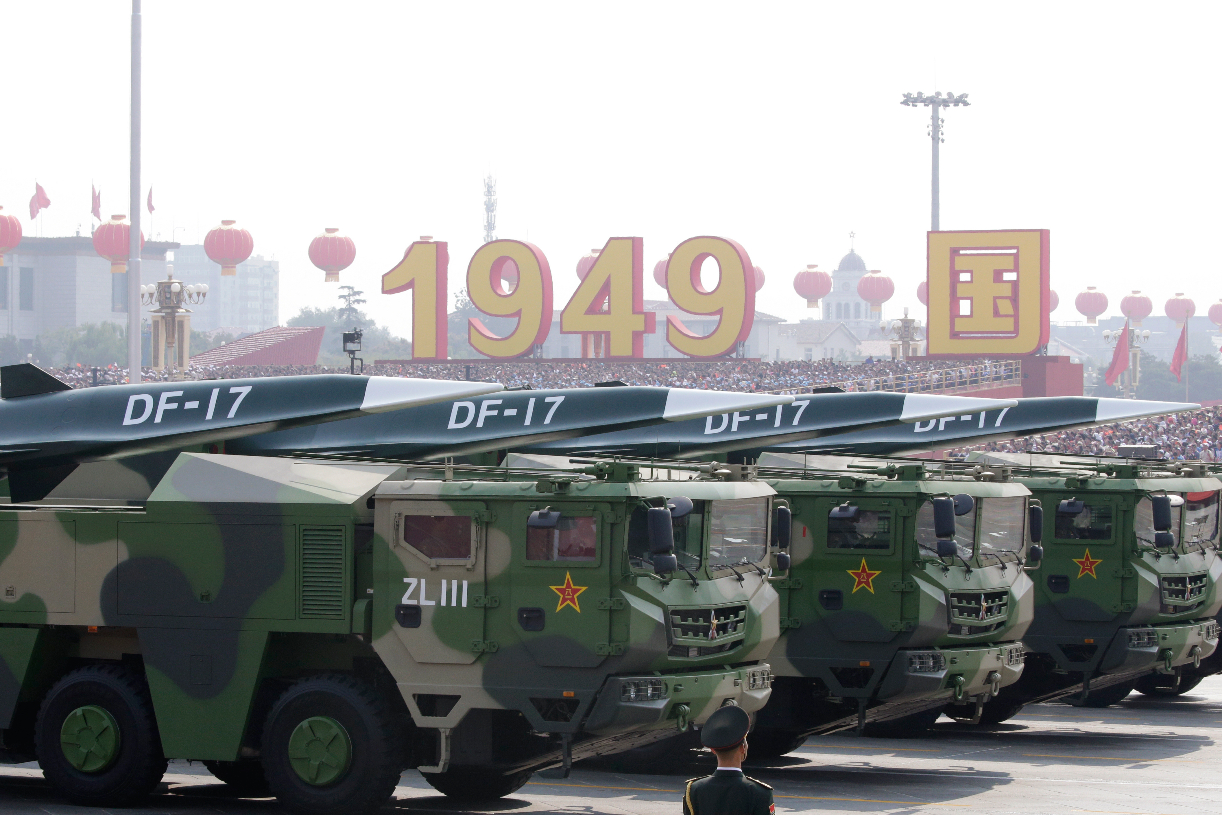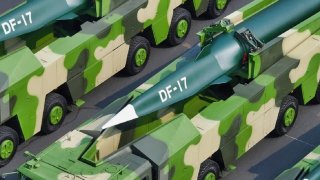China's Skip-Gliding Hypersonic Weapon: The U.S. Military's Can't Match It?
China's recent advancements in hypersonic weapons, mainly through the "skip-gliding" technique, are closing the gap with, and potentially surpassing, the United States in this critical area.
Summary and Key Points: China's recent advancements in hypersonic weapons, mainly through the "skip-gliding" technique, are closing the gap with, and potentially surpassing, the United States in this critical area.
-This maneuver allows hypersonic missiles to "ping-pong" off the Earth's upper atmosphere, extending their range by 34% and making them incredibly difficult to intercept.
-While the U.S. has made progress with hypersonic prototypes, China’s rapid development and commitment to maturing these technologies, combined with their potential to deliver devastating strikes on U.S. infrastructure, present a significant threat.
-The U.S. must recognize and address this growing challenge to maintain its global military superiority.
China is Beating the US in Hypersonic Weapons
If you’ve ever been out near a pond or a lake for a protracted period of time, you’ve likely taken a rock and skipped it across the surface of the water. How heavy the rock is, its shape, and the strength of your arm all help determine how far a rock will go when you throw it. But if you want to send it really far, one of the best ways to do that is make the rock skip across the body of water, rather than throwing it over.
That same idea undergirds research from the China Aerodynamics Research and Development Center. Only instead of rocks, the Chinese researchers are experimenting with advanced hypersonic missiles.
Skip-gliding takes a hypersonic kill vehicle to the edges of the Earth’s atmosphere – the place where the upper atmosphere crosses into space – and effectively ping-pongs off the denser layers that atmospheric region.
According to the June issue of the Journal of Astronautics, this maneuver would likely extend a Chinese hypersonic weapon’s range by 34%, and its flight time by 28%.
Oh, and good luck trying to knock such a system out from its flight path.
Don’t Underestimate the Chinese
The usual suspects will naturally downplay this development. They’ll say that the Americans already created a craft with similar capabilities way back in the 1950s under the imprimatur of the U.S. Air Force’s Dyna-Soar program. But that program, like so many incredible U.S. concepts in the last half of the 20th century, went nowhere. It just died on the vine.
China doesn’t do this. They let their experimental programs mature.
So while China may be retreading old ground the Americans already walked, in so doing, Beijing’s better-funded and well-led science teams might be able to do something new with the experimental technology.
The Chinese research team thinks that this skip-gliding process can make their kill vehicles travel faster than Mach 20 (over 15,000 miles per hour). Business Insider details further that, “after an hour of flight, [the hypersonic weapon can] still maintain a velocity of Mach 7 as [it skips] on the atmosphere.”
For those who continue living in denial about China’s rapidly growing technological threat to the United States – a threat typified in Beijing’s hypersonic weapons development program – this is what losing looks like.
Sure, the Americans are starting to come around to the threat. Yes, companies like Lockheed Martin have experimented with hypersonic missiles that can be fired from U.S. warplanes such as the F-35 Lightning II, F-22A Raptor, and F/A-18 Super Hornet.
But these weapons are prototypes. Meanwhile, both China and Russia have working hypersonic weapons in the real world. Moscow’s forces have already been using their hypersonic weapons in the unfriendly skies over Ukraine.

A Truly Destabilizing Offensive Capability
The Chinese, while behind the Russians, are leading the Americans. In 2021, American intelligence analysts were taken aback when China successfully launched a hypersonic weapon that circumnavigated the globe. Some reports indicated the hypersonic weapon came within 20 miles of its intended target in the Gobi Desert.
With such weapons, China can not only defend any territory near their own, but they can threaten the Americans in ways hitherto unimagined by Washington’s policymakers. There are no serious active defenses capable of knocking these weapons out before they threaten the United States.
What’s more, these systems can either be fitted with conventional ordnance or nuclear warheads. In terms of targeting, with these hypersonic skip-gliding weapons, China can conceivably hit soft targets in the United States.
Take, for example, Lockheed Martin’s facility where they build the F-35, America’s primary warplane. This sophisticated and expensive bird is built in a facility that is within target range of this proposed Chinese skip-gliding hypersonic vehicle.
How Skip-Gliding Hypersonic Vehicles Impact a Sino-American War
Should China wish to do serious damage to America’s ability to project airpower near China’s shores, they could knock out this U.S.-based assembly plant with a hypersonic weapon, setting the F-35 program back significantly and causing all kinds of declines in the U.S. national defense posture.
This pattern of attack could play out across at least the Western United States, which would undoubtedly sit within range of these new weapons.
Thankfully, for now, it sounds like the skip-gliding hypersonic kill vehicles Chinese researchers are studying remain in the developmental phase. But given the resources, political will, and mass production capabilities of the Chinese state, it is likely the People’s Liberation Army Air Force or People’s Liberation Army Navy will eventually get this technology.
Meanwhile, the Americans have certainly made strides in hypersonic technology, but they are not the dominant player in this domain – not by a long shot. And that’s a huge problem as the U.S.-led international breaks down and the China-Russia-Iran alliance intensifies its opposition to the declining U.S. Eventually a conflict will erupt, and it just might not go the way of America because of developments like the Chinese skip-gliding hypersonic weapon.
Author Experience and Expertise: Brandon J. Weichert
Brandon J. Weichert, a National Interest national security analyst, is a former Congressional staffer and geopolitical analyst who is a contributor at The Washington Times, the Asia Times, and The-Pipeline. He is the author of Winning Space: How America Remains a Superpower, Biohacked: China’s Race to Control Life, and The Shadow War: Iran’s Quest for Supremacy. His next book, A Disaster of Our Own Making: How the West Lost Ukraine, is due October 22 from Encounter Books. Weichert can be followed via Twitter @WeTheBrandon.
All images are Creative Commons or Shutterstock.
From the Vault
Russia Freaked Out: Why the U.S. Navy 'Unretired' the Iowa-Class Battleships
Battleship vs. Battlecruiser: Iowa-Class vs. Russia's Kirov-Class (Who Wins?)


